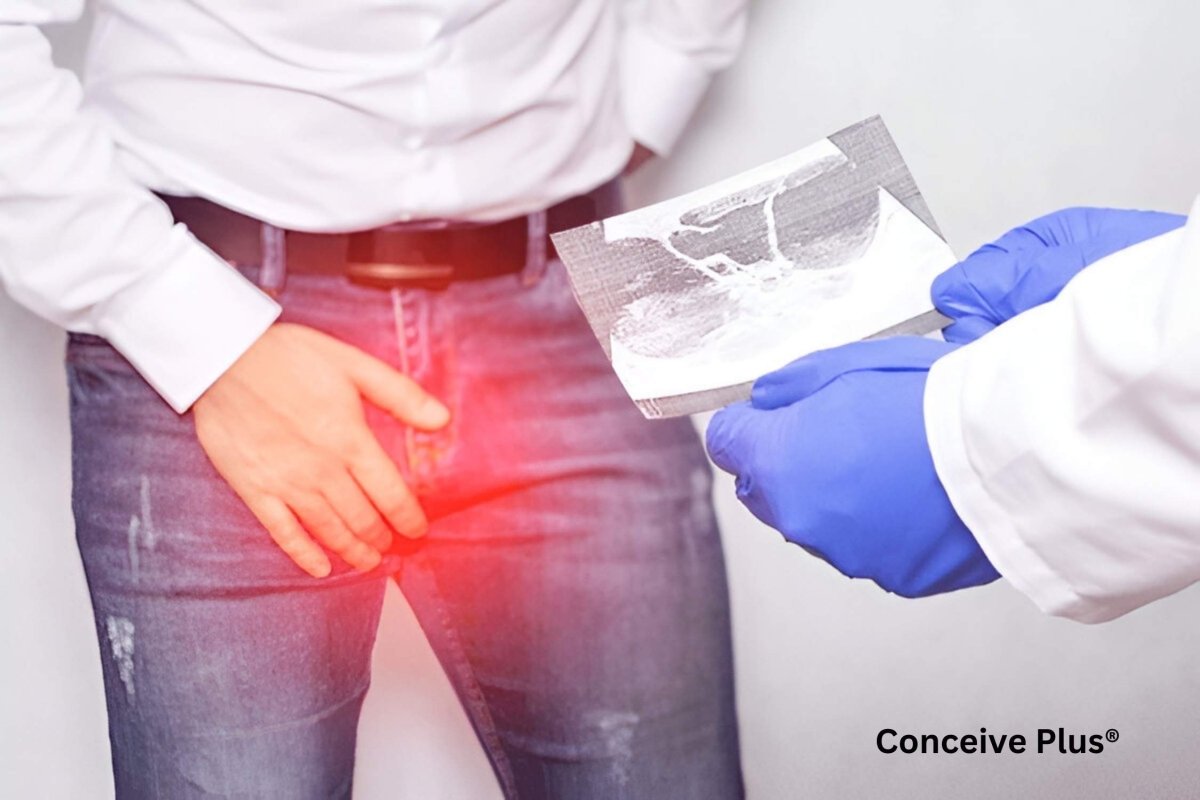Cyst Male Reproductive Organs: Causes, Diagnosis, and Solutions

Cysts are fluid-filled sacs that can develop in any part of the body. When they are present in the male reproductive system, they can result in fertility problems [1]. Cysts vary in size, from very small and not causing any symptoms to large enough to result in a blockage.
The common areas in the male reproductive system where there is a higher chance of developing a cyst male are the epididymis and testes. In this article, we will understand different types of cyst in males, their causes, and how to manage them for improved fertility health.
Types of Cysts in the Male Reproductive System
Some common types of cysts, abscesses or tubercle that are usually seen in the male reproductive system are:
-
Epididymal Cysts
Epididymis is the tube that transports sperm aways from the testes. It receives sperm cells from the testes and stores sperm for maturation. Epididymal cysts are typically small in size and are filled with a clear fluid [1]. In some cases, the sperm cells are also present in the epididymal cyst and in that case, the cyst is called spermatocele [2].

-
Hydrocele
Hydrocele is a type of cyst that develops when fluid collects around the testicle, leading to a swollen scrotum [3]. Since the fluid is present outside the testes in this case, hydroceles are often less painful and don't interfere with reproductive functioning.

-
Testicular Cysts
It is a less common condition, but a small cyst can develop within the testes. They usually don't spread, but when they do, they can interrupt testicular function and negatively affect fertility status.
Causes of Cysts In Male Reproductive System
A cyst can develop due to many causes, and depending on the causes, some cysts are mild, while others require immediate medical attention. Here are some factors that can contribute to developing a male cyst:
- Developmental Factors: Some cysts can develop without an apparent cause, like epididymal cysts. These cysts can develop naturally over time without any clear cause and are common in men of all ages.
- Infections: Infections in the reproductive system are the most common reason why a cyst develops. For example, an infection of the epididymis, known as epididymitis, can increase the risk of developing an epididymal cyst.
- Injury or Trauma: When you experience physical injury or trauma on the reproductive organs, it can result in swelling and fluid accumulation. One such example is fluid accumulation around the testes in case of hydrocele. This develops due to physical stress or trauma to the testes.
When to See a Doctor
Small cysts in the reproductive system don't always cause symptoms such as pain or swelling, but they can affect fertility status. In the case of larger cysts, you may experience the following symptoms, which is an indication that you might need a professional help:
- Persistent pain or discomfort in the scrotum
- Noticeable changes in the size or shape of the testicles
- Swelling or lumps in the scrotum or testicles
- Fertility concerns, especially if cysts or varicoceles are suspected
Management of Cysts in the Male Reproductive System
Management of cysts depends on the type of cyst, its location, and if it's causing symptoms. Here are some common options for managing a cyst:
- Observation: When the cyst is very small and causes no symptoms, doctors usually recommend regular monitoring instead of immediate treatment. This is because a very small cyst can resolve on its own, and even if it doesn't resolve, there is a very low risk of discomfort and complications from it [4]. Additionally, some men opt for fertility supplements containing essential nutrients to support reproductive health.
- Pain Management: Over-the-counter painkillers are typically the initial management option when cysts start to cause pain and discomfort. In some cases, the doctor may also recommend supportive underwear that can help reduce pain by providing additional support to the scrotum [5].
- Aspiration: When a cyst is large in size or starts to cause discomfort, the doctors choose aspiration as the treatment option. This procedure involves draining the cyst using a needle which relieves pressure and reduces cyst size.
- Surgical Removal: When a cyst is very large as in testicular blockage treatment, surgical removal can be considered. It is usually a minimally invasive surgery to cut and remove the cyst.
The Bottom Line
A cyst is an abnormal fluid-filled sac that can develop at any area of the male reproductive system. Cysts are not always concerning as small cysts don't cause any discomfort and put no threat on the reproductive health.
It is important to diagnose larger cysts early and start management. In severe cases, larger cysts can cause blockages in the reproductive tract and negatively impact fertility health. In cases where cysts impact fertility, you may wonder, can you reverse infertility, and with appropriate treatment, fertility can often be restored.
When you start noticing abnormal changes in the testes, such as sudden pain, lumps, or swelling, you must share your symptoms with a fertility specialist to avoid cyst male complications.
Resources Used
- Weatherly, D., Wise, P. G., Mendoca, S., Loeb, A., Cheng, Y., Chen, J. J., & Steinhardt, G. (2016). Epididymal Cysts: Are They Associated With Infertility? American Journal of Men S Health, 12(3), 612–616. https://doi.org/10.1177/1557988316644976
- Spermatocele - Symptoms & causes - Mayo Clinic. (2022, March 31). Mayo Clinic. https://www.mayoclinic.org/diseases-conditions/spermatocele/symptoms-causes/syc-20377829
- Huzaifa, M., & Moreno, M. A. (2023, July 3). Hydrocele. StatPearls - NCBI Bookshelf. https://www.ncbi.nlm.nih.gov/books/NBK559125/
- Mukendi, A. M. (2020). Bilateral epididymal cyst with spontaneous resolution. Clinical Case Reports, 8(12), 2689–2691. https://doi.org/10.1002/ccr3.3199
- Mínguez-Alarcón, L., Gaskins, A. J., Chiu, Y., Messerlian, C., Williams, P. L., Ford, J. B., Souter, I., Hauser, R., & Chavarro, J. E. (2018). Human Reproduction, 33(9), 1749–1756. https://doi.org/10.1093/humrep/dey259













